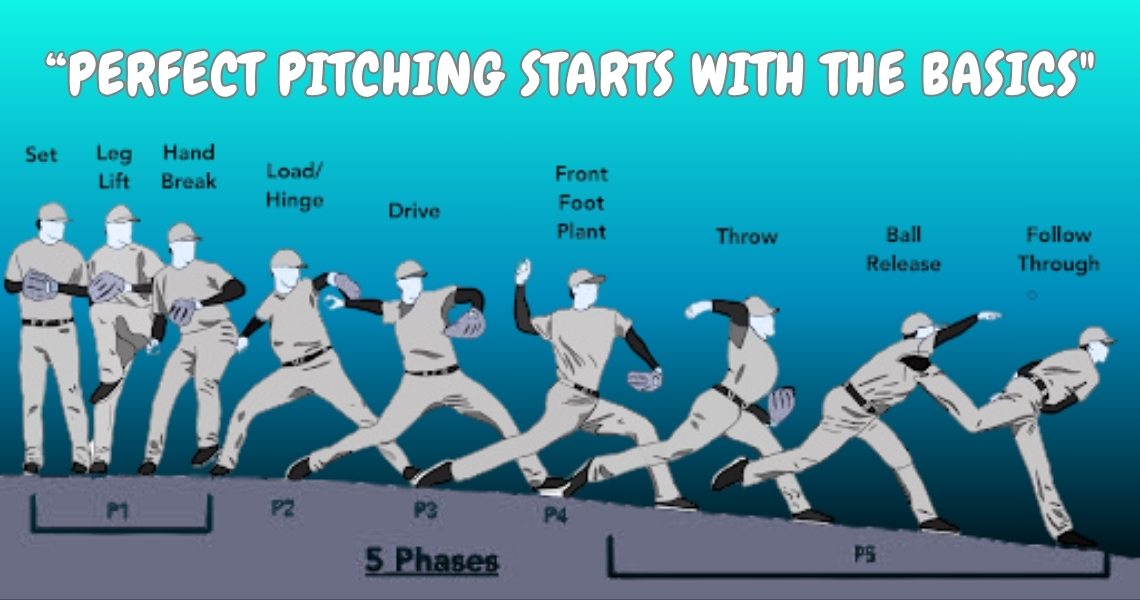Pitching is one of the most exciting—and complex—roles in baseball. The pitcher controls the tempo of the game, challenges every batter, and holds the power to dominate through skill, strategy, and precision. But learning how to pitch isn’t just about throwing hard. It’s about mechanics, mindset, and control.
This guide walks you through how to pitch—from basic technique to mental approach—so you can step onto the mound with confidence and purpose.
Understanding the Role of a Pitcher
As the starting point for every play, the pitcher sets the tone. A strong pitcher mixes velocity and movement while staying composed under pressure. The best ones know how to throw strikes, keep hitters off balance, and make adjustments as the game evolves.
Step 1: Build Sound Pitching Mechanics
Effective pitching starts with solid mechanics. A repeatable motion helps you throw harder, stay accurate, and protect your arm from injury. A standard delivery includes:
- A balanced setup on the rubber
- A controlled leg lift to generate power
- Hand separation as you stride forward
- Rotation and release out in front
- A smooth follow-through to maintain momentum and limit stress
Practicing this full motion slowly, then at full speed, is the key to developing rhythm and control.
Step 2: Master the Fastball First
Your fastball is the foundation of your arsenal. Focus on the four-seam fastball to begin—it’s the easiest to control and the most effective at establishing the strike zone. Keep your wrist behind the ball and release it out front for better velocity and accuracy. Once you can consistently throw it for strikes, you’re ready to expand your pitch mix.
Step 3: Add One Off-Speed Pitch
Instead of trying to learn everything at once, start by adding just one complementary pitch. A changeup is a great option—it looks like a fastball but arrives slower, disrupting the hitter’s timing. Other good secondary pitches include a curveball or slider, but focus on throwing your chosen one with control before adding more.
Step 4: Train for Command, Not Just Speed
Velocity gets attention, but command wins games. You should be able to hit your target, adjust location, and throw strikes in any count. Practice throwing to both corners of the plate and changing pitch heights. Being able to locate pitches consistently makes everything else more effective.
Step 5: Strengthen Your Mental Game
Pitching is a mental battle as much as a physical one. You’ll face pressure, failure, and long innings—your success depends on how well you handle all of it. A strong mental routine might include taking a deep breath before every pitch, visualizing your location, and staying calm even after a mistake. Great pitchers reset quickly and compete one pitch at a time.
Step 6: Learn to Work the Batter
Once your mechanics and command are consistent, shift focus to how you attack hitters. Use your fastball to get ahead early in the count. Follow it with off-speed or breaking pitches when you’re ahead. Avoid predictable patterns and learn to read each hitter’s tendencies.
Key principles:
- Get strike one early
- Change speeds and eye levels
- Pitch inside to keep hitters honest
Reading a batter’s stance, swing, and body language will give you clues about what to throw next.
Step 7: Stay Healthy and Build Endurance
Your arm is your most valuable asset. Take care of it with structured warmups, cool-down routines, and rest days. Include strength training for your legs and core to improve stamina and mechanics. Don’t throw through pain—listen to your body, and be consistent with your throwing schedule.
Frequently Asked Questions
A: The pitcher sets the tone for the game by controlling tempo, challenging every batter, and using skill and strategy to dominate. They mix velocity and movement while staying composed under pressure to keep hitters off balance.
A: Important mechanics include a balanced setup on the rubber, controlled leg lift to generate power, proper hand separation during stride, rotation and release in front of the body, and a smooth follow-through to maintain momentum and reduce arm stress.
A: The four-seam fastball is recommended first because it’s easiest to control and effective at establishing the strike zone.
A: After mastering the fastball, add one off-speed pitch like the changeup, curveball, or slider. It’s important to throw the secondary pitch with control before learning more pitches.
A: Command is more important than speed. A pitcher should aim to hit targets consistently, adjust location, and throw strikes regardless of count to be effective.
A: Developing a mental routine such as deep breathing before pitches, visualizing pitch location, staying calm after mistakes, and focusing on one pitch at a time helps handle pressure and maintain composure.
A: Get ahead early with strikes, mix speeds and eye levels, pitch inside to keep hitters honest, avoid predictable patterns, and read the batter’s stance and swing for clues on pitch selection.
A: Use proper warmups and cool-downs, rest on off days, incorporate leg and core strength training, avoid throwing through pain, and maintain a consistent throwing schedule.
A: Discipline, focus, mastering the fastball, refining mechanics, building confidence with each practice, and controlling mindset, preparation, and execution are key to pitching success.
Final Thoughts
Becoming a pitcher takes more than raw talent. It takes discipline, focus, and a willingness to learn. Master your fastball, refine your mechanics, and build confidence with every rep. Control what you can control—your mindset, your preparation, and your execution. Pitchers don’t just react to the game—they control it, one pitch at a time.



